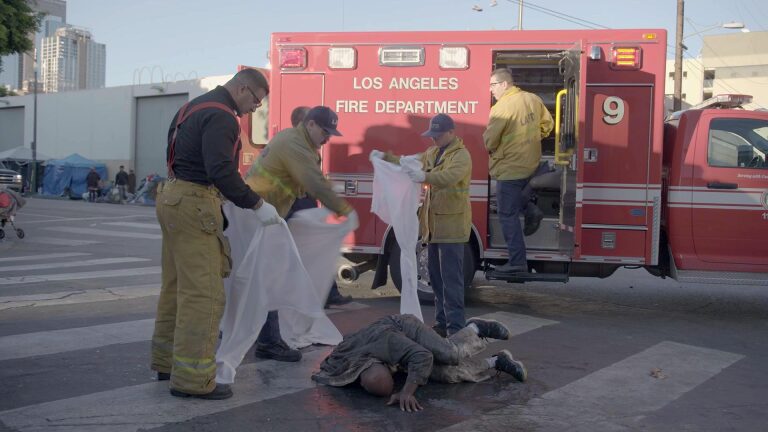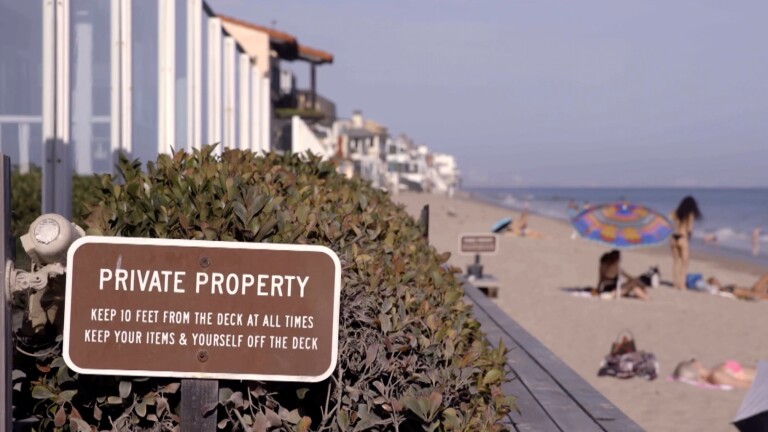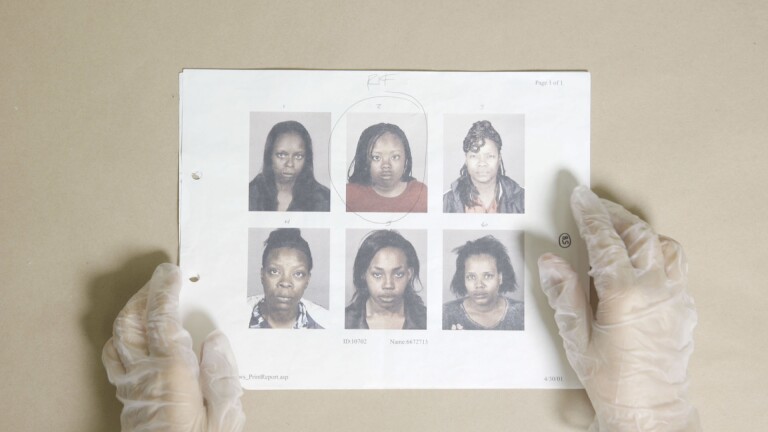
L.A.'s Proposed No-Kill Policy Raises Hackles on Both Sides
Whether you love them or can't stand to be near them, if you live in Los Angeles, cats are a part of your life. But forget those images of cuddly, cutesy fur balls. L.A. is home to millions of feral cats -- essentially wild animals. Controlling them used to mean putting them to sleep. That's changing. L.A. may soon become a no-kill city. Sounds humane, but the policy has critics. And as Judy Muller discovered, the cats have some vocal, passionate friends.
TRANSCRIPT: Judy Muller/Correspondent: If you look closely and quickly, you'll spot them. They are everywhere -- under cars, in the bushes, on roofs. They are feral cats, wild and untamed -- as many as two million of them roaming the streets and neighborhoods of Los Angeles. And L.A. isn't a bad place to call home for these guys. That's because it's on the way to becoming a "no-kill" trap-neuter-release city. A "no-kill" policy means not euthanizing animals unless they are dangerous or sick. Trap, neuter and release, or TNR, is when feral cats are trapped, spayed or neutered, and then released back into communities. And that approach appeals to folks who want these critters to live all of their nine lives. But there is a downside.
Amy/Los Angeles Homeowner: the fact that we've got wild animals roaming that are leaving feces, that are infecting us with fleas, which are diseasing carrying, it's unbelievable because if wild dogs were running around they would, you know, immediately come do something about. Muller: Because there are wild cats in Amy's neighborhood, she took it upon herself to deal with the source of the problem. She asked her neighbor to stop feeding them. He refused. So Amy spent a small fortune on a pest exterminator to kill fleas in her home, and she doesn't even own a pet. Amy: And he said it was one of the worst infestations he's ever seen and I was really upset because all of these horrible chemicals had to be pumped into our home.
Muller: Complaints to the city and county went nowhere. Meanwhile cat colonies were cropping up everywhere -- in West L.A., for example, where we met Joe. Joe/Los Angeles Homeowner: On our street, there were 60 to 70 cats. Muller: He's since moved from that street. He was fed up with neighbors who didn't pick up the feces or control the fleas that go along with feeding 70 of them. When he contacted the city, he was told he needed to trap the cats himself. So he did. Joe: My neighbor and I trapped over 55, 60 cats and there were still a lot left over.
Muller: Captured ferals end up here, in a city animal shelter. Most are not adoptable as pets and after a week or two, they are euthanized, but not if Christi Metropole can get there first. Christi Metropole/Stray Cat Alliance: I love all animals, but for whatever reason I spend most of my time helping cats. Muller: Christi heads the Stray Cat Alliance. She has been celebrated for her work, spaying and neutering thousands of cats throughout L.A. And she is a key player in what might be called "pet politics."
Paul Koretz/L.A. City Councilmember [in web video]: I love Stray Cat Alliance. I happen to be a cat lover. But I like everything they do. Muller: She donates to city councilmembers' campaigns, hosts fundraisers and attends celebrity-studded galas. But despite her political access and the hundreds of thousands of dollars in donations she's accumulated, she claims her group and others are the underdogs when it comes to fighting for cats' rights.
Metropole: Cat groups are so small and so underfunded, and they're working against the eight ball. They don't have any money. They're just cat ladies out here trapping and fixing and feeding. Muller: Well, not exactly. Some cat rescue groups have multi-million dollar piggy banks. They are well-funded, and well-mobilized. They even host feral cat conferences, like this one recently held in Marina Del Rey. Folks from around the country gathered to learn about "feral freedom" and "community cat management." And cats have clout. They can even hold up construction of a $150-million development.
Metropole: So we were actually granted an injunction by a Superior Court judge in Santa Monica, which we were very grateful. Muller: The Lincoln Place development in Venice housed a hundred feral cats. And stray cat alliance got a judge to stop demolition long enough to get them out. The cats had their own attorney. Metropole: They let us have complete access to the property -- in buildings, under buildings. We tented them off. We got all the cats and a lot of wildlife out. They all would have been gassed up and died a horrible death.
Travis Longcore/Urban Wildlands: They claimed they had an ownership in those cats, but then when it comes to responsibility, they don't want to take any responsibility for them in terms of minimizing their impacts, and there's example after example of how that plays out.
Muller: Travis Longcore is founder of Urban Wildlands, a nonprofit which protects species and habitats in urban areas. His group successfully sued Los Angeles in 2008 and put a stop to the city's trap-neuter-release program. Longcore is concerned the release of feral cats into communities is impacting the wildlife. And the impact can be huge. According to a new study by the Smithsonian Conservation Biology Institute and the Fish and Wildlife Service, cats are killing some two and a half billion birds a year. The scientists conducting the study called that mortality rate shockingly high and urged policy intervention from keeping pet cats indoors to controlling feral cat colonies. The study found that feral cats do the most damage. Despite the new evidence, Christi Metropole isn't buying it. Metropole: That's been refuted and you can look at studies that rats kill them, that pesticide, habitat loss, windows, windmills, cell towers -- those are the real reasons birds are dying.
Muller: So we should just let all the cats live that want to be living out there in the wild? Metropole: We need to spay and neuter. Muller: But spay and neuter doesn't stop cats from killing birds, and it doesn't stop cats from defecating on lawns, and spreading disease. And that's what an L.A. County public health official warned of in this 2011 report. It urges L.A. city officials to reject a TNR program, citing the potential for "widespread flea infestations" and "disease transmission." Metropole: That health official has to have an excuse for their job. So they are always talking about the plague and all these things which are absolutely ridiculous. Muller: But record-breaking numbers of cases of flea-borne Typhus have been reported in Los Angeles County -- more than 120 in the past three years. L.A. County Public Health blames the dramatic blames the dramatic increase, in part, on "the relocation of host animals (possums and feral cats)" to regions where typhus wasn't previously common. And Metropole isn't buying that either.
Metropole: Cats are not a public health nuisance. There are not sicker people around cats. They are actually healthier.
Muller: A lot of people who encounter feral cats would disagree. In 2007, workers and children at the daycare centers at Rancho Los Amigos Rehabilitation Center in Downey complained to the L.A. County Public Health Department. They were besieged by 150 feral cats. They suffered flea bites and were overwhelmed by cat feces. In October 2008, an aide to supervisor Don Knabe ordered the cats' removal but also cautioned "we can expect to get a lot of backlash from the animal rights community." [Woman in YouTube video]: It's not euthanization. It's killing of these cats. [Man's voice in YouTube video]: Please put a stop to the unnecessary cruelty and contact County Supervisor Don Knabe's office telling him his plan will fail...
Muller: And there was. Rescue groups mobilized that threatened legal action. What did the county do? Just six months later, it agreed to a settlement allowing the Stray Cat Alliance to trap the cats. The county also agreed to pay the group $200 a cat, money that was to be used "to take care of it for the remainder of the cat's life" by sending the ferals to a sanctuary. The county also picked up the tab for vaccinations and neutering.
Muller [to Metropole]: They paid you to take them at $200 a cat. Where are they? Metropole: They didn't pay us necessarily. A lot of them went to Cat House on the Kings, a lot of them went to individuals -- a lot of them were friendly because they were dumped, so we found them homes.
Muller: Records show Metropole's group was paid over $9,000. Some cats were sent to a sanctuary, but others were relocated to cities like Beverly Hills.
Today, there are fewer cats at Rancho Los Amigos, but some are still there and still being fed. Longcore: That is not a sustainable option, paying people to take care of cats. The truth of the matter is, and this is what is so difficult for people to understand is that managing and controlling unowned, free-roaming cats will require euthanasia. There are not enough shelter spaces, there is not enough sanctuary space. And we have to stand up and be honest. But the thing is something is going to die in this equation. Muller: We wanted to interview supervisor Don Knabe and county public health chief Dr. Jonathan Fielding about the health risks and the political pressures. But both declined repeated requests for interviews. In fact, most people who did speak to us asked that we withhold their last names and their locations. Why? Because of fear of harassment from animal rights groups. Beverly Hills attorney Darian Bojeaux knows about that first hand. Four years ago she went to City Hall and pushed for a law banning the feeding of feral cats in alleys and public property.
Darian Bojeaux/Beverly Hills Homeowner [in 2009 city council video]: We just want people to stop creating health hazards. Muller: She says she was confronted by 200 cat activists including Christi Metropole. Metropole [in city council video]: ...and please adopt TNR and don't criminalize feeding cats.
Bojeaux: We were against all these people that didn't even live here. There might have been three or four people who lived in Beverly Hills, and all these other people, maybe L.A. County, maybe other counties, and they were just coming to put pressure and make a scene.
Muller: Darian told us her personal information ended up on an animal rights website. Bojeaux: They were referring to my name and she lives at this address and they were trying to make me feel afraid for my safety.
Muller: It's what Dr. Longcore calls a rent-a-mob mentality, and he says he's also been a victim of it. Longore: I have also had my phone number and what they thought was my address put on a website and told to tell Travis what you think about him wanting to kill the cats, and this is not uncommon at all.
Muller [to Metropole]: I have also talked to people who say that the cat advocacy groups have so much political clout...
Metropole: Really? [laughs]
Muller: ...that you guys can call up an instant mob at a city council meeting and intimidate these politicians. Do you think that's true?
Metropole: That's hilarious. I would love that to be true. We are actually always behind the eight ball. Muller: City officials are often caught in the crossfire.
Brenda Barnette/L.A. Animal Services: I had a friend of mine say she'd rather set her hair on fire than to go to L.A. Muller: Brenda Barnette moved from Seattle to take the job of general manager for L.A.'s animal services. She is the fifth one in 11 years. Her predecessors were subjected to protests from animal rights groups. Barnette: There is more passion in this particular business on every side of the street than you could possibly imagine. But, you know, it's good. It keeps us honest. It makes us think. It makes us come up with creative solutions.
Muller: She's trying to referee L.A.'s fights over cats. The latest battle is over the city's proposed cat program, which would bring back trap-neuter-release to L.A. An environmental assessment of the program is about to begin and will look at the impact feral cats have on wildlife and neighborhoods. As drafted now, the program would legalize the feeding of sterilized feral cats and exempt them from the pet limits. Longcore: If this program were to go into effect, the person across the street here could decide they just really love cats, and they could adopt -- adopt in quotes -- cats from shelters and put them in their backyard, and they could develop a colony of 50 or 60 feral cats right there and there would be no recourse that any of the neighbors or the park users would have.
Metropole: You can't legislate humanity. Mostly people are really good, so if you can't, if you see a starving cat and you put food out for that cat, you are not a criminal. The person who abandoned that cat is the criminal. Muller: Cat politics aside, almost everyone in this struggle agrees on one thing -- more effort should be put into the adoption of healthy animals.
Barnette: We have amazing animals. We have young animals. We have older animals. We have middle-aged animals. We have big, little, short hair, long hair. So I think what we have failed to do is let people know what amazing animals we have. Muller: And, some would add, do a better job of controlling the ones that roam untamed and unchecked. It won't be easy. The phrase "tough as herding cats" is, in this case, no metaphor. I'm Judy Muller for SoCal Connected.






















